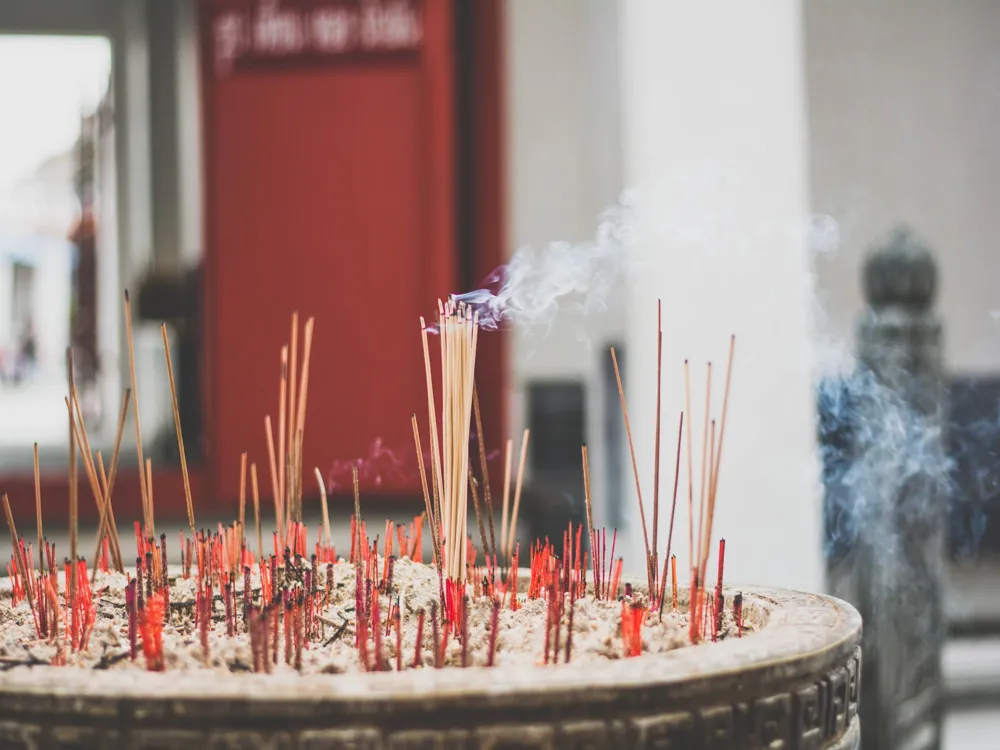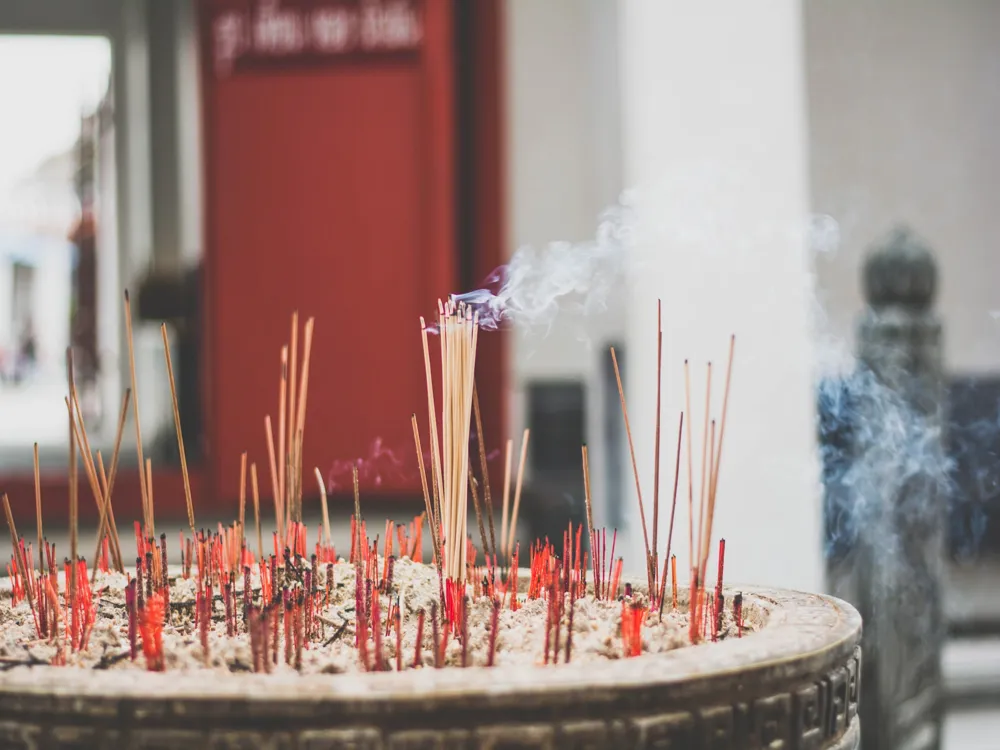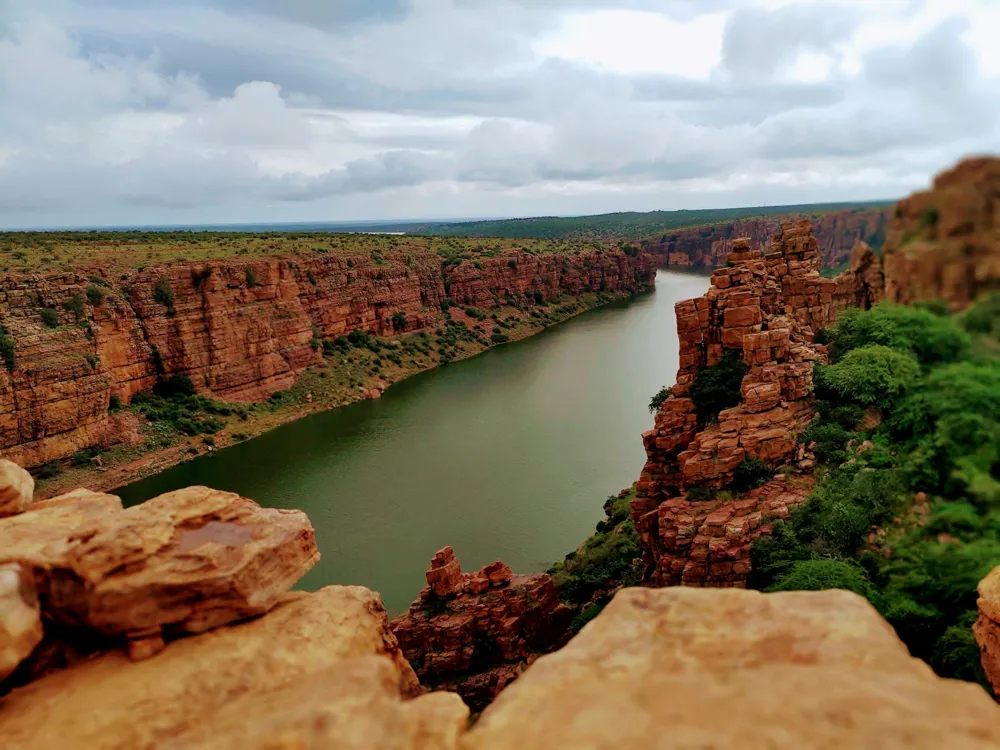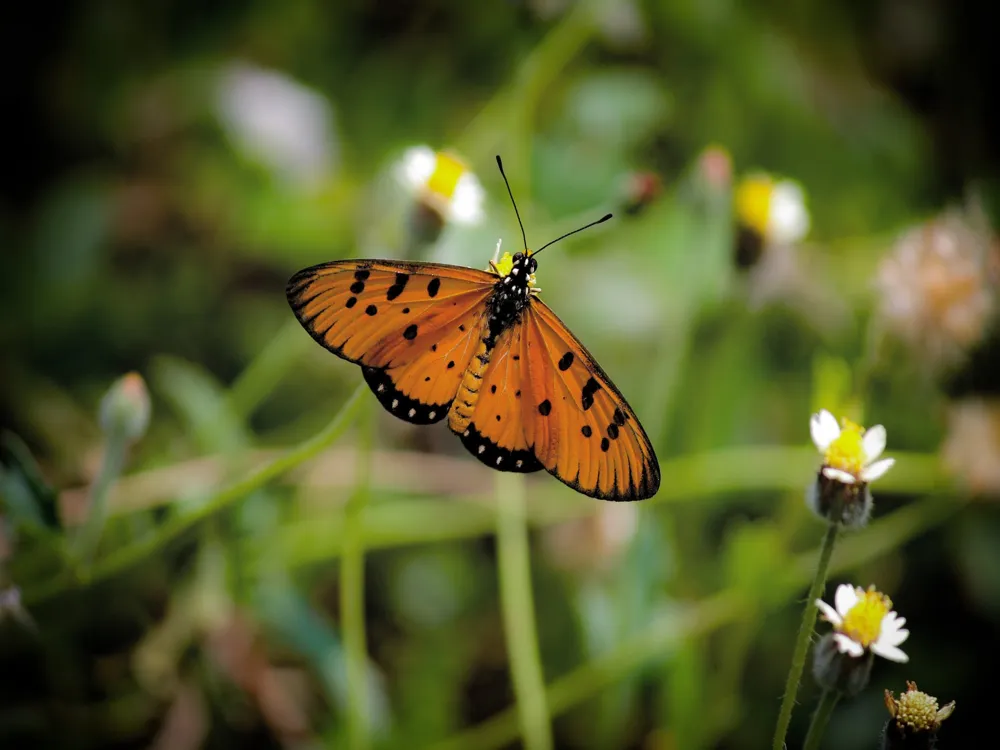Thimmamma Marrimanu, located in Anantapur district of Andhra Pradesh, India, holds a place of great significance and wonder. Known as the world's largest banyan tree, it covers an astonishing 4.721 acres. This natural marvel is named after Thimmamma, a local woman of devout and legendary repute. The tree is not just a botanical wonder but also a symbol of cultural and historical importance to the region. The history of Thimmamma Marrimanu dates back to the 15th century and is wrapped in local folklore. According to legend, Thimmamma was a devoted wife who performed Sati on her husband's pyre, and this tree is said to have sprouted from the spot. Every year, a large fair is held here, drawing people from far and wide, showcasing the tree's deep cultural resonance. The tree's extensive canopy, supported by thousands of aerial roots, creates a mesmerizing sight, evoking awe and spirituality among its visitors. Ecologically, Thimmamma Marrimanu is a vital component of the local environment. It supports a diverse ecosystem, providing shelter to numerous birds and small mammals. Its vast root system plays a crucial role in soil conservation and sustaining the local groundwater levels. Additionally, the tree serves as a living classroom for students and researchers, offering insights into the banyan tree's unique survival strategies and ecological significance. The architecture of Thimmamma Marrimanu is a marvel of natural design. Unlike man-made structures, this banyan tree's architecture is an intricate network of aerial roots, branches, and leaves that have expanded over centuries. The banyan tree, scientifically known as Ficus benghalensis, has a unique way of growing. Its branches spread outwards and drop aerial roots, which, upon reaching the ground, grow into new trunks. Over time, this process results in a vast, interconnected canopy with numerous trunks, resembling a forest made from a single tree. The tree's canopy spans over 19,107 square meters, creating a massive green umbrella that can shelter over 20,000 people. The way the aerial roots intertwine and merge with the existing trunks is an architectural phenomenon, showcasing nature's prowess in creating sustainable and resilient structures. This living structure is not static but continues to grow and change, adding to its grandeur and complexity. Moreover, the architecture of Thimmamma Marrimanu is not just a natural wonder but also an embodiment of sustainability. It stands as a testament to the resilience and adaptability of nature, offering lessons in sustainable living and ecological balance. The tree's capacity to provide a self-supporting ecosystem, its role in carbon sequestration, and its influence on the local climate are aspects that make its architecture both unique and invaluable. The ideal time to visit Thimmamma Marrimanu is between November and February when the weather is pleasant. Avoid the summer months as the heat can be intense. As a revered site, visitors are advised to maintain decorum. Refrain from damaging the tree or littering the area. Engage with local customs and participate in traditions if possible, as this enhances the cultural experience. Consider taking a guided tour to understand the tree's historical and ecological significance fully. Photography is allowed, but drones may be restricted. Always ask for permission before photographing local people or religious ceremonies. Thimmamma Marrimanu is accessible by various modes of transportation. The nearest city is Anantapur, which is well connected by road and rail. From Anantapur, you can hire a taxi or take a bus to reach the tree. The nearest airport is in Bengaluru, approximately 215 kilometers away. From Bengaluru, one can either take a train to Anantapur or hire a vehicle to drive down. Local transport options like auto-rickshaws are also available for the last leg of the journey from Anantapur to Thimmamma Marrimanu. Read More:Overview of Thimmamma Marrimanu, Anantapur, Andhra Pradesh
Architecture of Thimmamma Marrimanu
Tips When Visiting Thimmamma Marrimanu
Best Time to Visit
Respecting the Site
Local Customs and Traditions
Guided Tours
Photography
How To Reach Thimmamma Marrimanu
Thimmamma Marrimanu
Anantapur
Andhra Pradesh
NaN onwards
View anantapur Packages
Weather :
Tags : Landmark
Time Required : 1 Hour
Entry Fee : No Entry Fee
Best Time Required : November to February
Planning a Trip? Ask Your Question
Anantapur Travel Packages
View All Packages For Anantapur
Top Hotel Collections for Anantapur

Private Pool

Luxury Hotels

5-Star Hotels

Pet Friendly
Top Hotels Near Anantapur
Other Top Ranking Places In Anantapur
View All Places To Visit In anantapur
Faq on Anantapur
What is Thimmamma Marrimanu?
Thimmamma Marrimanu is a giant banyan tree located in the Anantapur district of Andhra Pradesh, India. It is renowned for its vast canopy spread and is recorded in the Guinness World Records for its size. It is not just a natural wonder but also a place of cultural and religious significance for the local population.
How old is Thimmamma Marrimanu?
While the exact age of Thimmamma Marrimanu is difficult to determine, it is believed to be several hundred years old, with estimates suggesting that it could be around 550 years old or more.
Why is it named Thimmamma Marrimanu?
The tree is named after Thimmamma, a woman who is said to have committed sati (a discontinued Hindu funeral custom where a widow immolates herself on her husband's pyre) in 1434. The tree is believed to have sprouted at the site of her sati. It is considered sacred, and many believe that childless couples are blessed with children if they visit and pay their respects.
How large is Thimmamma Marrimanu?
Thimmamma Marrimanu covers an area of about 5 acres (2 hectares) with a canopy circumference of over 550 meters, making it one of the largest known banyan trees in the world.
How to visit Thimmamma Marrimanu?
Thimmamma Marrimanu is located near the town of Kadiri in the Anantapur district. It's accessible by road, and the nearest railway station is in Kadiri. Visitors can hire taxis or take local transportation from Kadiri to reach the tree. It's advisable to check local travel advisories or contact tour operators for the best route and travel arrangements.
View anantapur Packages
Weather :
Tags : Landmark
Time Required : 1 Hour
Entry Fee : No Entry Fee
Best Time Required : November to February
Planning a Trip? Ask Your Question
Anantapur Travel Packages
View All Packages For Anantapur
Top Hotel Collections for Anantapur

Private Pool

Luxury Hotels

5-Star Hotels

Pet Friendly
Top Hotels Near Anantapur
Other Top Ranking Places In Anantapur
Faq on Anantapur
What is Thimmamma Marrimanu?
Thimmamma Marrimanu is a giant banyan tree located in the Anantapur district of Andhra Pradesh, India. It is renowned for its vast canopy spread and is recorded in the Guinness World Records for its size. It is not just a natural wonder but also a place of cultural and religious significance for the local population.
How old is Thimmamma Marrimanu?
While the exact age of Thimmamma Marrimanu is difficult to determine, it is believed to be several hundred years old, with estimates suggesting that it could be around 550 years old or more.
Why is it named Thimmamma Marrimanu?
The tree is named after Thimmamma, a woman who is said to have committed sati (a discontinued Hindu funeral custom where a widow immolates herself on her husband's pyre) in 1434. The tree is believed to have sprouted at the site of her sati. It is considered sacred, and many believe that childless couples are blessed with children if they visit and pay their respects.
How large is Thimmamma Marrimanu?
Thimmamma Marrimanu covers an area of about 5 acres (2 hectares) with a canopy circumference of over 550 meters, making it one of the largest known banyan trees in the world.
How to visit Thimmamma Marrimanu?
Thimmamma Marrimanu is located near the town of Kadiri in the Anantapur district. It's accessible by road, and the nearest railway station is in Kadiri. Visitors can hire taxis or take local transportation from Kadiri to reach the tree. It's advisable to check local travel advisories or contact tour operators for the best route and travel arrangements.




















